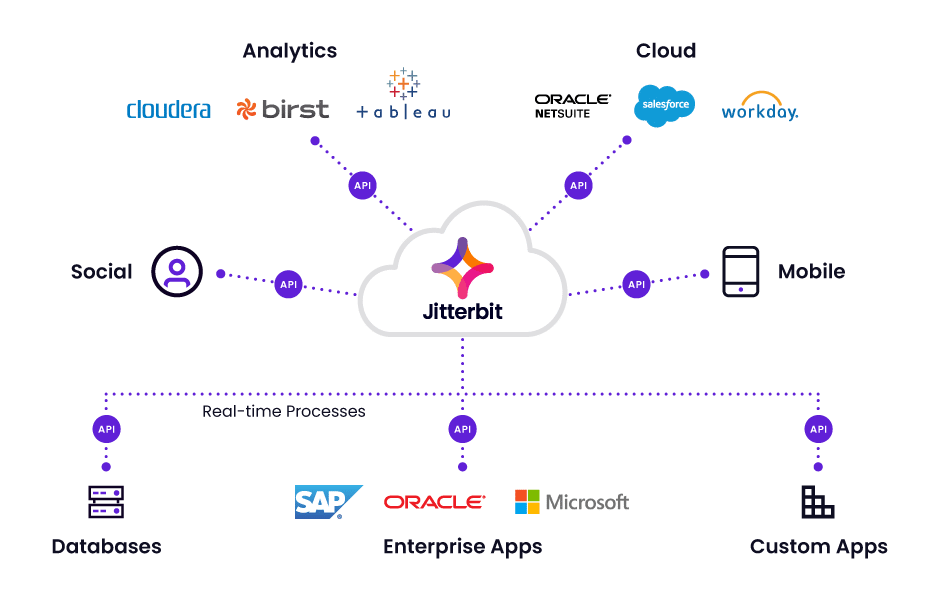In today’s fast-paced digital landscape, businesses rely heavily on technology to streamline operations, improve customer experiences, and stay competitive. One of the key elements driving this technological transformation is API integration. APIs (Application Programming Interfaces) enable different software systems to communicate and interact with each other, making it easier for businesses to integrate various applications and services. This blog explores the significance of API integration, its benefits, and how it can be effectively implemented to unlock your business’s full potential.
Understanding API Integration
API integration is the process of connecting different software applications through APIs, allowing them to share data and functionality seamlessly. This integration enables disparate systems to work together as a cohesive unit, improving operational efficiency and data accuracy.
APIs act as intermediaries, facilitating communication between different software systems without requiring manual intervention. For example, an API can enable a CRM system to connect with an email marketing platform, allowing businesses to automatically sync customer data and send targeted email campaigns.
Benefits of API Integration
1. Streamlined Operations
API integration simplifies and automates various business processes. By connecting different systems, businesses can eliminate manual data entry and reduce the risk of errors. For instance, integrating your inventory management system with your e-commerce platform ensures real-time updates on stock levels, preventing overselling and stockouts.
2. Enhanced Efficiency
With API integration, businesses can automate repetitive tasks and workflows, freeing up valuable time for employees to focus on more strategic activities. Automation not only improves efficiency but also reduces operational costs. For example, integrating a payment gateway API with your e-commerce site allows for seamless transactions, reducing the need for manual processing and reconciliation.
3. Improved Customer Experience
APIs play a crucial role in enhancing customer experiences. By integrating various systems, businesses can provide a more cohesive and personalized experience for their customers. For example, integrating a customer support system with a CRM allows support agents to access comprehensive customer information, enabling them to provide more personalized and efficient service.
4. Scalability and Flexibility
API integration allows businesses to scale their operations and adapt to changing needs without overhauling their existing systems. APIs provide a modular approach to integration, enabling businesses to add or replace components as needed. This flexibility ensures that businesses can easily integrate new technologies and services as they emerge.
Implementing API Integration Effectively
1. Identify Integration Needs
Before implementing API integration, it is essential to identify the specific needs and objectives of your business. Determine which systems and applications require integration and the desired outcomes. This will help you select the right APIs and plan the integration process effectively.
2. Choose the Right APIs
Selecting the right APIs is crucial for successful integration. Evaluate the APIs based on factors such as reliability, security, documentation, and support. Ensure that the APIs you choose align with your business needs and provide the functionality required for seamless integration.
3. Plan and Test Integration
Develop a detailed integration plan that outlines the steps, timelines, and resources required for successful implementation. Testing is a critical part of the integration process to ensure that the APIs function as expected and do not cause disruptions to existing systems. Perform thorough testing to identify and resolve any issues before going live.
4. Monitor and Maintain Integration
Once the API integration is complete, ongoing monitoring and maintenance are essential to ensure continued performance and reliability. Regularly review integration logs, monitor system performance, and address any issues that arise promptly. Keeping the integration up-to-date and secure is crucial for maintaining optimal functionality.
Accelerating Innovation
API integration acts as a catalyst for innovation within organizations. By leveraging APIs, businesses can integrate cutting-edge technologies and tools without starting from scratch. This approach allows companies to rapidly adopt new solutions, whether it’s advanced analytics, AI capabilities, or emerging software applications. As a result, businesses can stay ahead of the competition and continually enhance their offerings to meet evolving market demands.
Enhancing Data Insights
One of the significant advantages of API integration is the ability to consolidate and analyze data from multiple sources. APIs facilitate the seamless flow of data between different systems, providing a comprehensive view of business operations and customer interactions. This integration enables more accurate and actionable insights, empowering decision-makers to make informed choices based on real-time data. Enhanced data insights lead to better strategic planning and improved overall performance.
Boosting Collaboration
APIs not only improve internal efficiency but also foster collaboration with external partners and stakeholders. By integrating with third-party systems, businesses can streamline interactions with suppliers, partners, and customers. This seamless connectivity enhances collaboration, speeds up processes, and strengthens relationships. For instance, integrating with a partner’s system can enable real-time updates on order status or inventory levels, leading to a more synchronized and effective partnership.
Conclusion
API integration is a powerful tool that can transform your business operations, enhance efficiency, and improve customer experiences. By connecting different software systems and automating processes, businesses can unlock their full potential and stay competitive in a rapidly evolving digital landscape. Effective API integration requires careful planning, selection of the right APIs, and ongoing maintenance to ensure success.
Embracing API integration can drive significant benefits for your business, from streamlined operations and enhanced efficiency to improved customer experiences and scalability. As technology continues to advance, API integration will remain a vital component of modern business strategy, enabling organizations to innovate and thrive.



